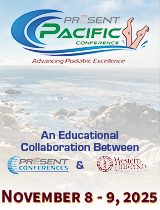02/28/2018 Amol Saxena, DPM
Lack of Podiatric Authors in Our Journals (Joseph Borreggine, DPM)
There are many reasons for the lack of DPM
produced research and more non-DPMs publishing in
our journals.
Most podiatric students and residents are not
required to actually complete written and
publishable research during their training. There
may be less "perceived value or need". As I
interview Fellowship candidates, I am able to see
how much research they are actually required to
complete. Most are case studies. There was a time
where podiatrists were trying to document their
cases and show the pathology they were capable of
seeing. Publishing was the only way to "see" it.
I wrote an editorial about the need to go beyond
this in a 2012 JFAS editorial.(1) Now the bar has
been raised, which I will relate further.
A generation ago, when Dr. Borregine and I went
to school, our biomechanics professor Dr. Oleg
Petrov required us to write a paper and a few of
us published our work. Some residency directors
would not give a certificate unless the required
research was completed. This is still my policy
for my Fellowship. In fact, approved ACFAS &
AAPSM Fellowships require it, though I seldom see
it enforced.
Non-DPMs from around the world like to publish in
American journals. As an Honorary Member of the
German Association of Foot & Ankle Surgery, I see
they want to practice American-style podiatry &
foot surgery, so they read our journals.
Publishing in our journals is beneficial to US
DPMs and foreign foot and ankle specialists. More
of our work gets read and cited, raising our
journals impact factors and the foreign
researchers get a "notch in their cap" for
publishing in an American journal.
Another aspect of non-DPM and foreign DPM
research is that many come from socialized
medical systems. They have to use evidenced-based
medicine practices and their findings and
outcomes can influence practice patterns around
the world. This is helpful to all foot and ankle
practitioners who read the research. Those who
don't, may be missing out. Unfortunately, in the
current society, many don't read the journal
articles, but rather search on "Google", etc.
This may sometimes be efficient and easier,
though not often accurate nor reliable.
As I mentioned, the bar for research in all
aspects of medicine has been raised, as "high-
level" studies are required to change practice
patterns and policy. Though it is difficult to do
level 1 or even 2 studies on some aspects of
podiatric treatments we should be able to do
level 3 studies. George Tye Liu, DPM recently ran
for the ACFAS board (and won) on the platform
that DPMs need to do more research and start
maintaining registries. One weakness the podiatry
community has is that research funding primarily
goes to research institutions, where few DPMs
work. Therefore, if most of the foot & ankle work
is done by non-DPMs in academic centers receiving
funding, it makes sense that the research
produced would be by non-DPMs.
Another aspect of the current medical environment
is that various agencies and groups are
evaluating outcomes. It won't be long before they
start evaluating the outcomes of common podiatric
procedures, compare to others, costs etc. Many
DPMs have already started to do this, including
in the most recent issue of JFAS.(2)
I do see many of our colleagues are still pushing
and publishing high-quality research that is
often cited in non-podiatric journals as well:
Larry DiDomenico, John Grady, Chris Hyer, and
Scot Malay to name a few residency directors.
They are mostly from "my generation." Our
diabetic foot colleagues like David Armstrong
have been demonstrating a DPM's value. I realize
IRBs can be onerous, taking CITI on-line may seem
like a waste of time, and it can take years to
accumulate data and finally get to see it in
publication etc. If it was easy, everyone would
be doing it!
If you are a podiatry student or resident, I
encourage you to take up the research challenge
and make the profession better for you and your
colleagues. If you are a currently practicing
DPM, I encourage to continue to read our journals
and others pertaining to your interests, along
with mentoring the next generation of potential
podiatric researchers. We owe it to show them how
to make things better for themselves and the
profession.
Amol Saxena, DPM, Palo Alto, CA
References
1. Saxena A. Stand up and start counting.J Foot
Ankle Surg. 2012 Jan-Feb;51(1):1-2. doi:
10.1053/j.jfas.2011.10.025. Epub 2011 Oct 14.
2. Albright RH1, Haller S2, Klein E3, Baker JR4,
Weil L Jr5, Weil LS Sr6, Fleischer AE7.Cost-
Effectiveness Analysis of Primary Arthrodesis
Versus Open Reduction Internal Fixation for
Primarily Ligamentous Lisfranc Injuries. J Foot
Ankle Surg. 2017 Dec 20. pii: S1067-
2516(17)30617-8. doi: 10.1053/j.jfas.2017.10.016.
[Epub ahead of print]







